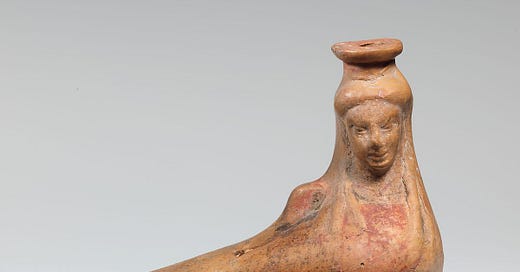“[B]irds feel something akin to pain (and fear) just before migration”
How does art contribute to emotional release and spiritual transformation?
Lately I've been thinking a lot about the creative process. What is the process for creating? What fuels my creative energy?
Through art, I am able to tap into the psycho-spiritual heritage of my ancestors and gain insight into their perception of life.
In my eyes, the artist holds great spiritual significance through their acknowledgement of the mystical elements of existence.
Art has the power to reflect back to its viewers, making it truly important to the process of spiritualisation, the acknowledgement of the unseen, visceral forces of life.
During a recent chat with a friend, we discussed a poet whose writing is heavily focused on political themes.
Through our conversation, we delved into the possibility that the poet's motivation for addressing this topic is rooted in a deep sense of anger and injustice that he felt early in his life.
Just as a person who often experiences disappointment in romantic love would always pen down their feelings of heartbreak.
Some people learn about their own psyche by observing the experiences of others, while others trust their own emotions to guide them.
The significance and usefulness of both expressions can be seen in how they shed light on the many facets of disappointment, reminding us that everything is inherently intertwined with our societal and interpersonal dynamics as experienced in community (political).
The relationship between people and their perception of beauty is pathological.
We draw from past encounters to frame our perception and understanding of the present.
However, our tendency to rely on familiar terms and associations may hinder our ability to fully utilise our perceptual skills to their full capacity.
Rather than embodying our understanding, we classify and reclassify, thus shifting our focus from the thing itself to its overall concept.
It's similar to how we let snippets of information take over our attention while someone is talking. What exactly are we truly hearing and perceiving?
Are we stuck in an impenetrable emotional cycle by resisting the behaviour (economy) we want to transform?
Artists' expression is driven by their intention. Is our communication meant to startle or comfort, criticise or praise?
What happens when a singular emotion becomes the main driving force behind creation?
In what other ways can humans fulfil their purpose of diffusing conflict and maintain their state of innocence and joy despite hardship?
“[B]irds feel something akin to pain (and fear) just before migration,” writes Lorine Niedecker, and “nothing alleviates this feeling except flight (the rapid motion of wings).”
(excerpted by Nuar Alsadir's essay The map of four kisses)
Similar to the inner turmoil that typically occurs before release.
Which tools within the realm of art can help facilitate this emotional release?





